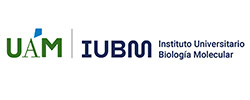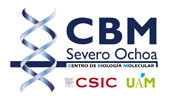Virus engineering and nanobiotechnology
Prof. Mauricio García Mateu. Catedrático. Departamento de Biología Molecular. UAM.
Prof. Alejandro Villanueva. Profesor Ayudante Doctor. Departamento de Biología Molecular. UAM.
Major research goals: We use protein engineering techniques and biochemical, biophysical and virological analyses to study the assembly, conformational stability and dynamics and physical properties of viruses, and their biological relevance (Mateu (ed.) (2013) Structure and Physics of Viruses, Springer 2013; new edition under way). Based on these studies, we aim at providing novel insights into key processes for viral infection, including virus morphogenesis, structural rearrangements and uncoating; and to provide guidelines and proof of concept for the application of this knowledge for the design of vaccines, antiviral drugs, biomaterials or modified nanoparticles for biomedical or bionanotechnological uses (see Mateu (2016). In Protein-based Engineered Nanostructures, Springer 2016, pp.83-120).
Scientific relevance and technological implications: Some major scientific contributions in the last years include: i) experimental evidence on the biological relevance of mechanical properties of viruses; ii) insights into the intimate relationship between virus mechanical elasticity and conformational dynamics at equilibrium; iii) detailed descriptions of virus capsid self-assembly routes, including the actual visualization in real time using high-speed atomic force microscopy of single molecules during capsid lattice assembly; iv) the discovery of the possibility to develop new antiviral drugs acting on the mechanical properties of viral particles; v) the genetic design of novel biomaterials with improved mechanical properties.
Some specific subjects that are currently being researched in our laboratory include: i) the relationship between the mechanics and dynamics of a virus capsid and virus assembly or genome uncoating; ii) the structural determinants of the mechanical properties of viruses; iii) the biological relevance of the mechanical properties of viruses; iv) the development of new antiviral drugs that modify the mechanical properties of viruses, and of mechanically resistant virus-based nanostructured materials.


